Riding with other bikers is a big part of what makes adventure biking so much fun. The problem with bikes is that you can’t just quickly say something to another rider. You may have seen something of interest on the side of the road, or you want to ask the rider in front to slow down or stop for a quick break. Even trying to talk to a pillion means shouting your lungs out. Luckily there are many solutions that enable you to converse comfortably with the gang. I did some research on the most common bike to bike communication systems. Here’s what I have found.
There are basically three common options for bike to bike communication. They are (1) long range Bluetooth kits, (2) two-way radios with a direct wired link to the helmet, or (3) two-way radio with a wireless Bluetooth helmet link.
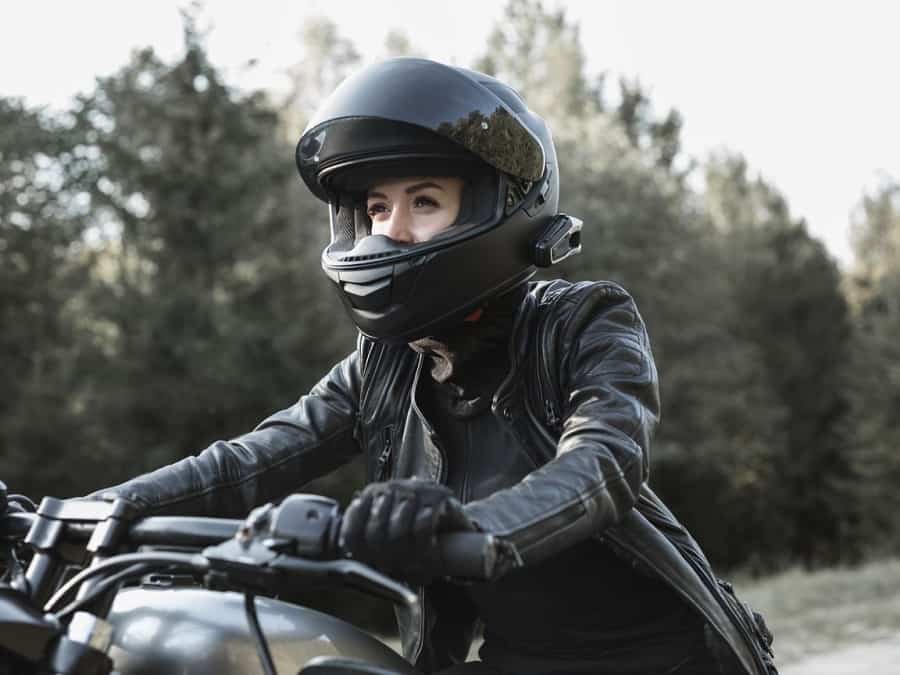
Different types of bike to bike communication
There are a variety of different systems available and the technology has come a long way. While the details of how the different bike to bike communication systems (or intercoms) work vary, they basically operate the same way. The rider talks through a microphone attached to the helmet and the system transmits the signal to the receiver on another bike. The other rider hears her mate clearly via earpieces inside her helmet.
The main way the signal is transferred between bikes are Bluetooth and radio (FM, FRS of GMRS). Bluetooth has a shorter range, but connects directly from helmet to helmet. Radio can reach further, but the control module needs to be connected via a wired link to the helmets, or via Bluetooth.
Long distance Bluetooth
The most advanced systems use the best new Bluetooth technology to seamlessly connect directly with other Bluetooth devices. Not only can you chat directly with multiple other riders, but you can connect to you smart phone to take calls and listen to music, or you can listen to the navigation instructions from your GPS.
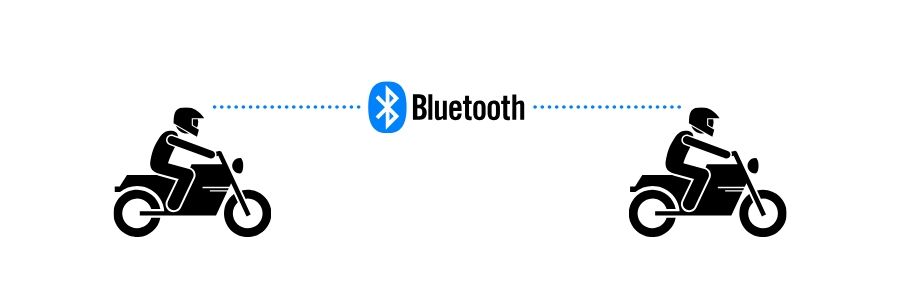
Some models, like the Sena 20S can pair up to 8 riders and automatically soft-mutes music when the GPS lady speaks up or a riding buddy spots a shaded tree to stop under. Many systems are hands free using voice commands and some even pair by simply tapping helmets together.
Bluetooth requires line of sight in order to connect and the battery will need charging often (at least once a day) if used continuously.
Two-way radio (wired)
Two-way radios use either FM, FRS or GMRS and are more powerful and reliable than Bluetooth. It will penetrate vegetation better and reflect off some surfaces to an extent. As with Bluetooth, line of sight is still necessary. Radios are generally push-to-talk, meaning that only one person can talk as a time.
The simplest method to use two-way radios are directly wiring the radio to the helmet. This is the most reliable connection, but with the obvious disadvantage of having to disconnect the wire each time you get off the bike. Since the system is permanently connected to the bike, it does not require charging and you avoid the frustration and inconvenience of connections being dropped.
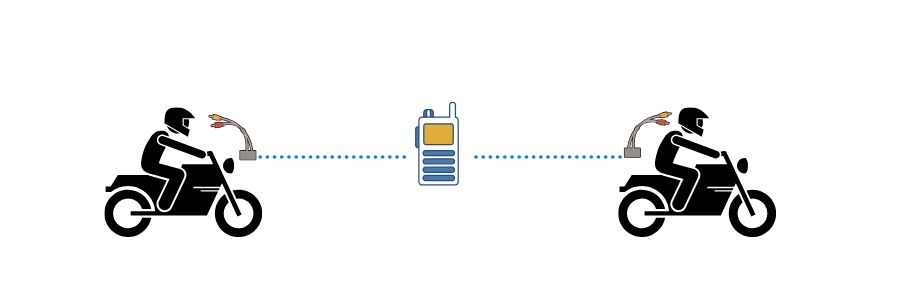
A hard-wired system like this won’t allow you to play music or connect your phone. There are some intercoms, however, like the ones from Autocom, that connects the rider’s helmet with the radio but uses Bluetooth to connect other devices, such as your phone or music.
Two-way radio (wireless)
If you are not keen on being connected to the bike with wires, you can use a Bluetooth two-way radio adapter like the Sena SR10i. This system allows you to connect many types of two-way radio with nearly any Bluetooth helmet kit.
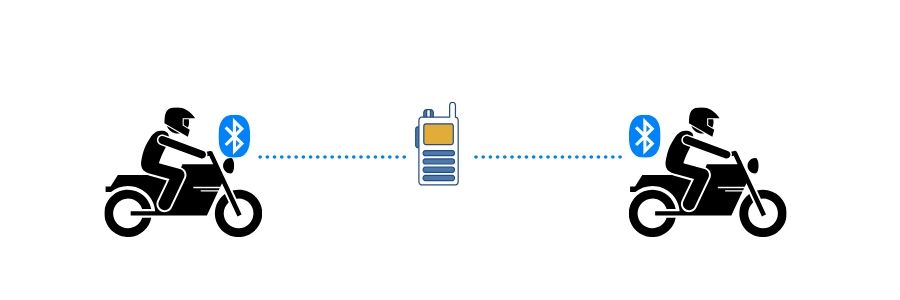
This setup combines the advantage of the longer distance of radio with the convenience and comfort of not having any wires dangling from your helmet.
Press-to-Talk over Cellular (POC)
Another option, which is less practical if you intend on crossing many countries, is POC. It is similar to a two-way radio, but has a SIM card to transfer push-to-talk speech using mobile data. Both riders will need an active SIM card for the network and need be within cell phone coverage. The big advantage is that you can talk over any distance.
Why do you need bike to bike communication?
Apart from the social aspect of chatting away in the saddle all day, communication on a long bike trip can be very useful. When riding in a group, everyone rarely feels comfortable at the same pace and it may help making sure the whole groups stays together. If someone needs to take a quick break or experience a breakdown, it is much easier to just say so rather than flashing their lights, getting left behind.
In February 2020, over one hundred of the world’s top adventure riders used Sena’s 50R with Mesh 2.0 Intercom during the BMW International GS Trophy 2020. Check out what they had to say in the video below.
Where it really is helpful is in heavy traffic. By staying in touch riders can discuss which turn to take or which lane to stick to. On mountain passes or where visibility is poor, the rider in front can warn the pack of oncoming traffic or danger around a bend.
“As we entered Alexandria in Egypt in the final day of our CrossingAfrica trip, my wife’s bike’s headlights and horn was not working anymore. We had to navigate 10-lane wide peak-traffic just after sunset.
There were a few moments where I nearly lost sight of her. We did not have any bike to bike communication and I shudder to think what would have happened if I had lost her, as we didn’t have a plan as to where we’d meet up if that happened.”
Francois Steyn – Crossing Africa
For other important things to consider before going on a bike trip with your wife, check out this article.
Factors to consider before buying a bike to bike system
Bike to bike communication systems are not cheap, and you need two sets before you can communicate which each other. It is therefore important to consider a few things before choosing the correct model.
Here is a brief list of things to think about before making your final decision on a bike to bike communication system:
Range
If you are planning or riding together, as a couple for instance, range is not a big issue. Bluetooth might be perfect as it is convenient without any cables hanging form the helmet. If you are two-up on the same bike, a wired system may be sufficient.
Battery life
While newer Bluetooth systems can last more than a day, a plugged in radio device does not need charging as it stays connected to the bike.
Easy of use
Bluetooth doesn’t need any physical connections to the bike and therefore is more convenient when getting on and off the bike. The system will need to be paired with other devices, including your phone and GPS, but this is very easy on most systems. Some people complain on forums about struggling with the reliability of Bluetooth connections, but that was more on older models.
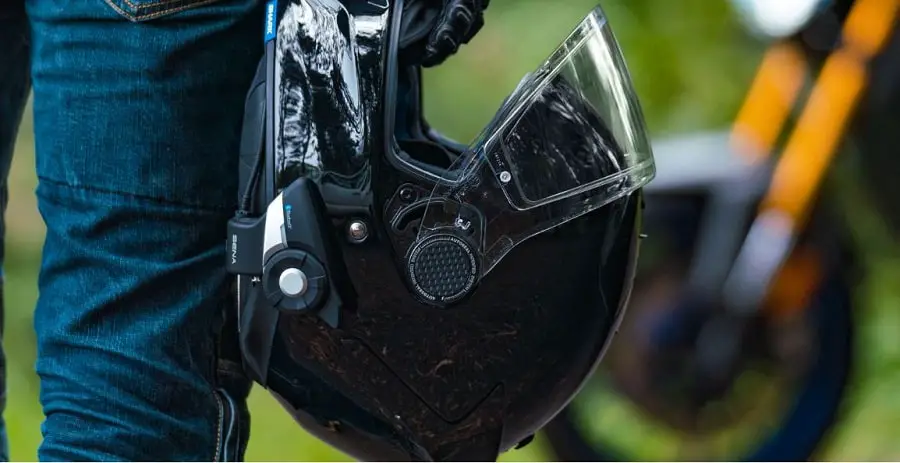
Bluetooth is generally hands-free while radio is push-to-talk.
How many connections?
Many Bluetooth systems allow multiple riders to speak at once. It can also switch between your phone, music or other riders easily. Most two-way radios are push-to-talk (PTT) which means only one person can talk at any given moment.
Also remember that two-way radio frequencies may be tuned into by other listeners in the area, so it is not entirely private. With Bluetooth, you first need to pair the devices.
Water proof vs. water resistant
On an adventure bike you need to make sure all equipment is waterproof. Some systems say they are water resistant, which is not the same thing, so make sure before you buy. You can stow your radio or controller under your seat or in a waterproof tank-bag if necessary.
Conclusion
As with any expensive bike equipment (except the basic safety gear, like a neck brace), first go on a trip or two without it to see if you really need it. Once you’ve established that you do, do some homework and make sure you understand which system suits your needs best. And make sure the brand you have your sights on, has the features that meet those needs.
Happy chatting while riding!
